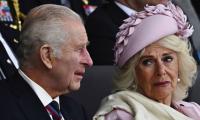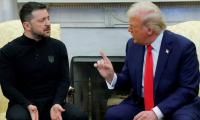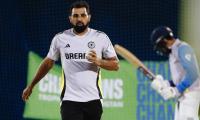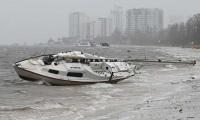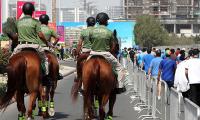Dimitar BechevBy
These days it feels like we are back in the days of Soviet leader Leonid Brezhnev. Scanning through Russia’s national TV channels, Russia 1 and First Channel, one could not help but feel transported to the 1970s. Warmongering rhetoric is back and so is staple criticism of the decadent West; film offerings range from the 1976 classic, Irony of Fate, to the 1967 comedy, Kidnapping, Caucasian Style, to, The Diamond Arm, a smash hit from 1969.
At the 30th anniversary of the Soviet Union’s disintegration, the Russian public is fed a healthy diet of nostalgia for the good old days of order and social stability.
Back-to-the-past seems to be the mood in Moscow’s foreign policy, too. US-Russia summitry is becoming a regular feature of relations, a flashback to the height of the Cold War. On December 30, US President Joe Biden and Russian President Vladimir Putin had a phone call to discuss tensions over Ukraine. Reportedly, each of them issued warnings to the other side but overall the tone was ‘constructive’.
The exchange came on the heels of a meeting between the two leaders via a video link held on December 7 to discuss a number of issues, including Ukraine. Six months earlier they held a face-to-face summit in Geneva, which resulted in the return of the US and Russian ambassadors to the respective capitals.
Communication has intensified at different government levels, as well. In early November, William Burns, CIA director and former ambassador to Russia, travelled to Moscow, where he met Putin, Russia’s Security Council Secretary Nikolai Patrushev and Russian Foreign Intelligence Service chief Sergei Naryshkin to discuss tensions with Ukraine. US National Security Adviser Jake Sullivan has also been in contact with Putin’s foreign policy aid Yuriy Ushakov.
For the Kremlin, having Biden’s full attention is a success. It is a clear sign that amassing troops and threatening military action against Ukraine works. During the past six years, Moscow has grown frustrated with the deadlock in the Ukrainian conflict. The Minsk II Agreement forged in 2015 with the mediation of France and Germany has failed to end the fighting.
Kyiv and Moscow are blaming each other for the lack of progress. The Russians are claiming Ukraine has not delivered on its commitment to implement constitutional changes granting broad autonomy to the self-proclaimed Donetsk and Luhansk People’s Republics as a step towards reintegrating them. The Ukrainians, for their part, are accusing Russia of not allowing the government in Kyiv to restore control over the Russian-Ukrainian border.
To overcome the deadlock, the Kremlin would like to force a new deal and do it through the US, bypassing Paris and Berlin. The idea is that Ukrainian President Volodymyr Zelenskyy would be presented with a fait accompli and would have no choice but to fall in line.
But in engaging with the US, Russia has also raised the stakes. On December 17, the Russian foreign ministry circulated two treaty proposals, one with the US and one with NATO. They put forward a demand for the Atlantic Alliance to rescind the promise made to Ukraine and Georgia in April 2008 that they could one day join.
The draft furthermore requires NATO not to station large combat forces in its eastern members, as it started doing following Russia’s 2014 annexation of Crimea. Moscow also wants NATO to commit not to deploy intermediate-range missiles close to its borders.
Last but not least, the proposals call for an end to military assistance to Ukraine, whether provided by the US or through NATO, as well as a halt on alliance exercises involving post-Soviet countries. In essence, Russia wants to turn the clock back to the late 1990s, evicting the West from Eastern Europe and cementing its hegemonic position in its so-called ‘near abroad’.
In pursuing those goals, the Kremlin is leveraging its military clout. According to estimates, more than 100,000 Russian troops and heavy weaponry are currently deployed near the Russian-Ukrainian border as well as in the annexed Crimean Peninsula. A good part has been deployed since early 2021. An operation against Ukraine is, therefore, not off the table. Putin might be bluffing but should he decide to move against the neighbouring country, he would have no trouble whatsoever.
The US and its European allies’ response has been to draw Russia to the negotiating table in order to defuse the tensions.
After the active diplomatic outreach by the Biden administration, in late December, Russian Foreign Minister Sergey Lavrov announced talks would be held January 10. A Russia-NATO meeting is taking place two days afterwards. Even if the bulk of the Russian proposals are non-starters for the West, engaging in a diplomatic process is preferable to violence.
If everything goes well, there might be some limited progress too, especially on ‘deconfliction’ in areas where NATO and Russia face off, such as the Black and the Baltic Seas. Over time, talks could yield partial security agreements acceptable to both parties as well as to the likes of Ukraine and Georgia which, contrary to what the Kremlin believes, have interests and agency of their own.
But to be sure, there is plenty of scepticism, too. Some pundits are suggesting that Russia’s publication of the draft treaties, before the actual talks, is a clever ploy to undermine the diplomatic track and create a pretext for military action against Ukraine.
To succeed in this game, the US and its allies need to negotiate with the Russians from a position of strength. As in Brezhnev’s days, they need to credibly deter Moscow in order to open space for real negotiations. That is why, the US is communicating to Putin its readiness to ramp up economic sanctions – “like none he’d ever seen”, in Biden’s words – in case of war.
Excerpted: ‘Russia-US face-off: What should we expect in 2022?’
Courtesy: Aljazeera.com
What Washington needs to register is that terrorism is threat not only to Pakistan but also to US and its allies
Global superpowers are weaponising blockchain to assert financial dominance
Pakistan is simultaneously experiencing too much water and too little water
Eminent educationist Baela Raza Jamil launched initiative in Lahore at conference in February 2006
Pakistan has risen to second place in Global Terrorism Index 2025, based on number of deaths in terrorist attacks...
They are waiting for world where they can work without fear and walk without danger
